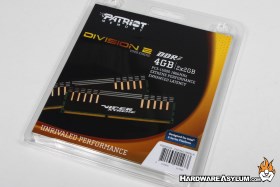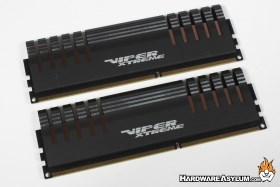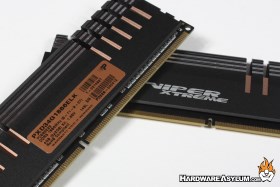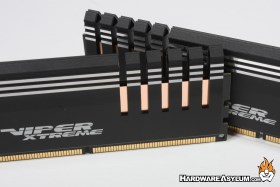Patriot Division 2 Viper Xtreme PC3 15000 Memory Review
Author: Dennis Garcia
Published: Monday, February 14, 2011
Introduction
Computer systems have advanced quite a bit over the years and every minor thing you change can alter its performance. With older systems you only needed to concern yourself with the type of memory module you choose however considering that all modern processors are now using DDR3 you need to start looking at the things that make each module unique.
In this review we will be looking at a new DDR3 memory kit from Patriot called the Division 2 Viper Xtreme. Those familiar with Patriot memory will recognize the Viper name as being part of their premium product line which invariably sets our expectations rather for this product.
In this review we will be looking at a new DDR3 memory kit from Patriot called the Division 2 Viper Xtreme. Those familiar with Patriot memory will recognize the Viper name as being part of their premium product line which invariably sets our expectations rather for this product.
The Viper Xtreme modules in this review are part of a dual channel 4GB kit designed specifically for the Sandy Bridge platform. The modules are PC3-15000 parts rated to run at 1866Mhz with CAS9 timings. For an enthusiast CAS9 seems rather slow, and it actually is, but you may be surprised at how timings impact day to day performance.
Sandy Specific Memory
The Sandy Bridge architecture puts a huge emphasis on memory performance so much in fact that the memory multiplier is actually an integral part of the system and requires some special attention. There are 5 memory multipliers available with Sandy Bridge, 10.67, 13.33, 16, 18.67 and 21.33. These numbers multiplied by the Base clock (BCLK) determine the memory frequency. By default our 2600K boots at 13.33 x 100 giving us a memory frequency of 1333Mhz. If you are fortunate enough to buy higher speed memory you have two options to increase performance.
- Set the XMP Profile which will auto adjust for timing, frequency and voltage.
- Manually adjust the settings to match or tweak as you would like.
Our Patriot modules are 1866Mhz parts so by setting the XMP profile the system clock is adjusted to the 18.67 giving us a resulting memory frequency of the rated 1866Mhz. Despite the fact you can use any DDR3 module rated for 1.5v-1.65v on a Sandy Bridge system the rated frequency is the primary reason behind specialty modules such as these.
Division 2 modules feature a new and stylish heatspreader constructed of a vented aluminum heatshield with 2 pieces of highly polished copper underneath. The copper strips not only look cool but help to quickly transfer heat to the aluminum spreader. Visually the dichotomy is quite pleasant, and the copper adds some weight to the modules for that quality, we means business, feel.





